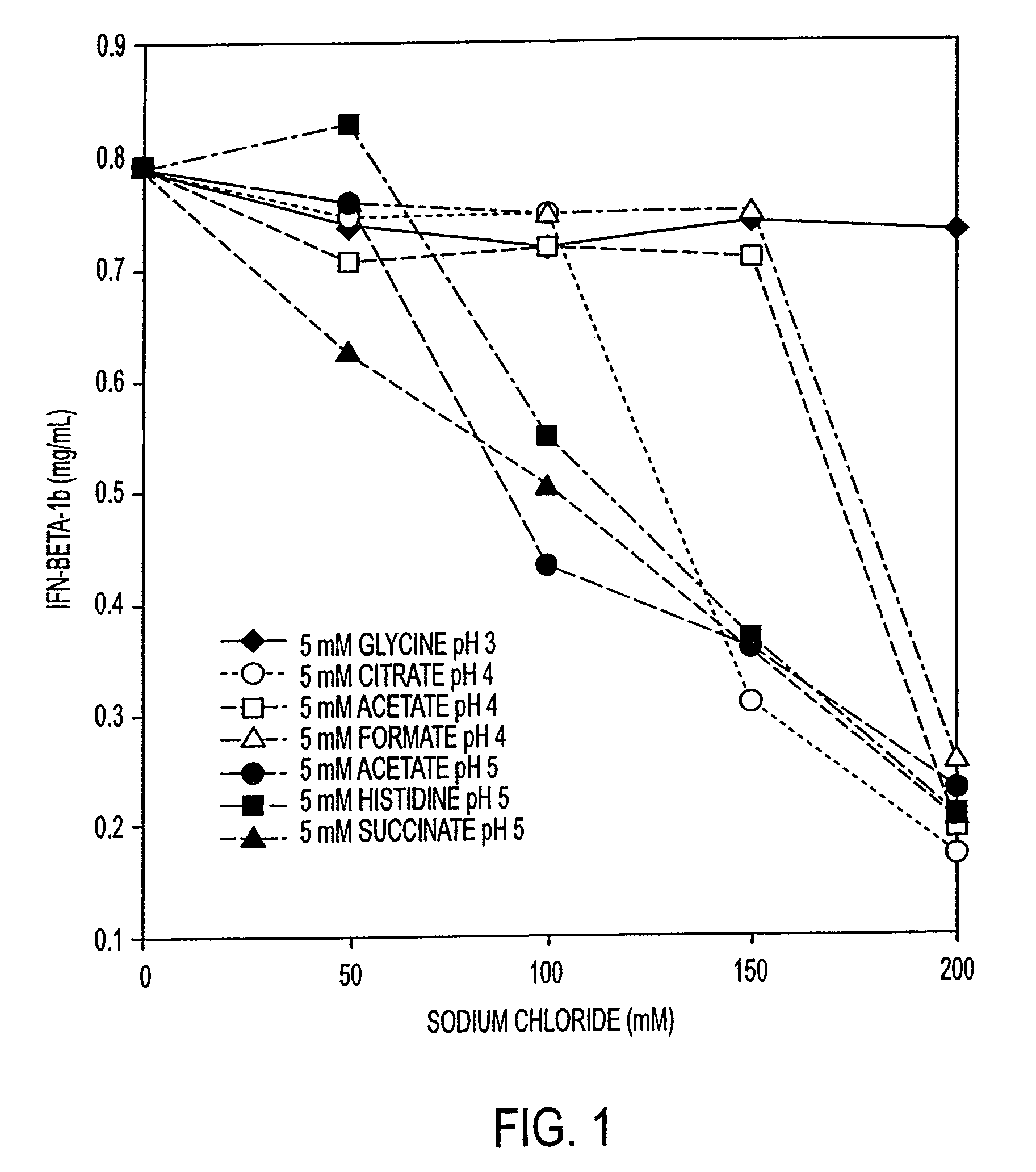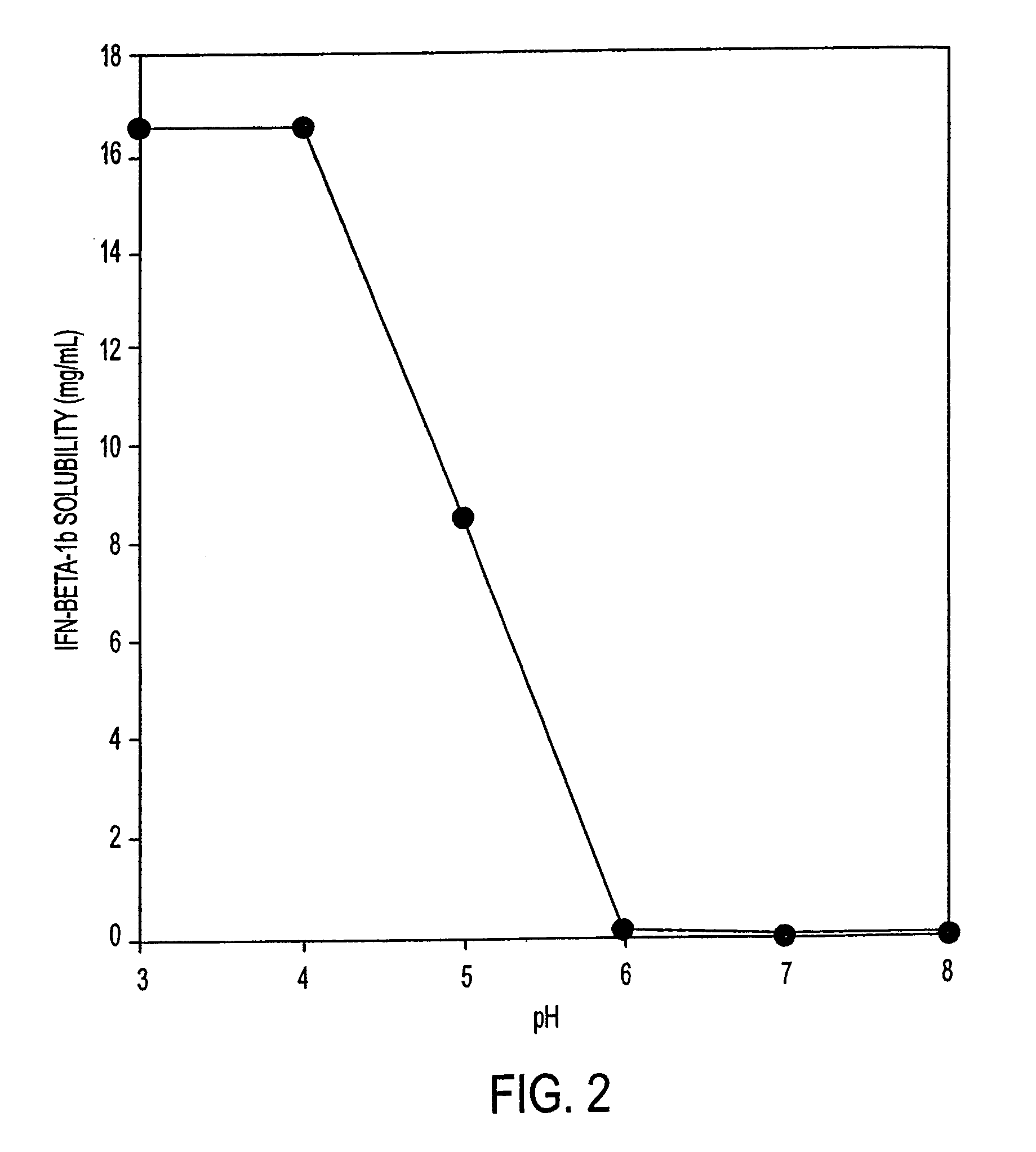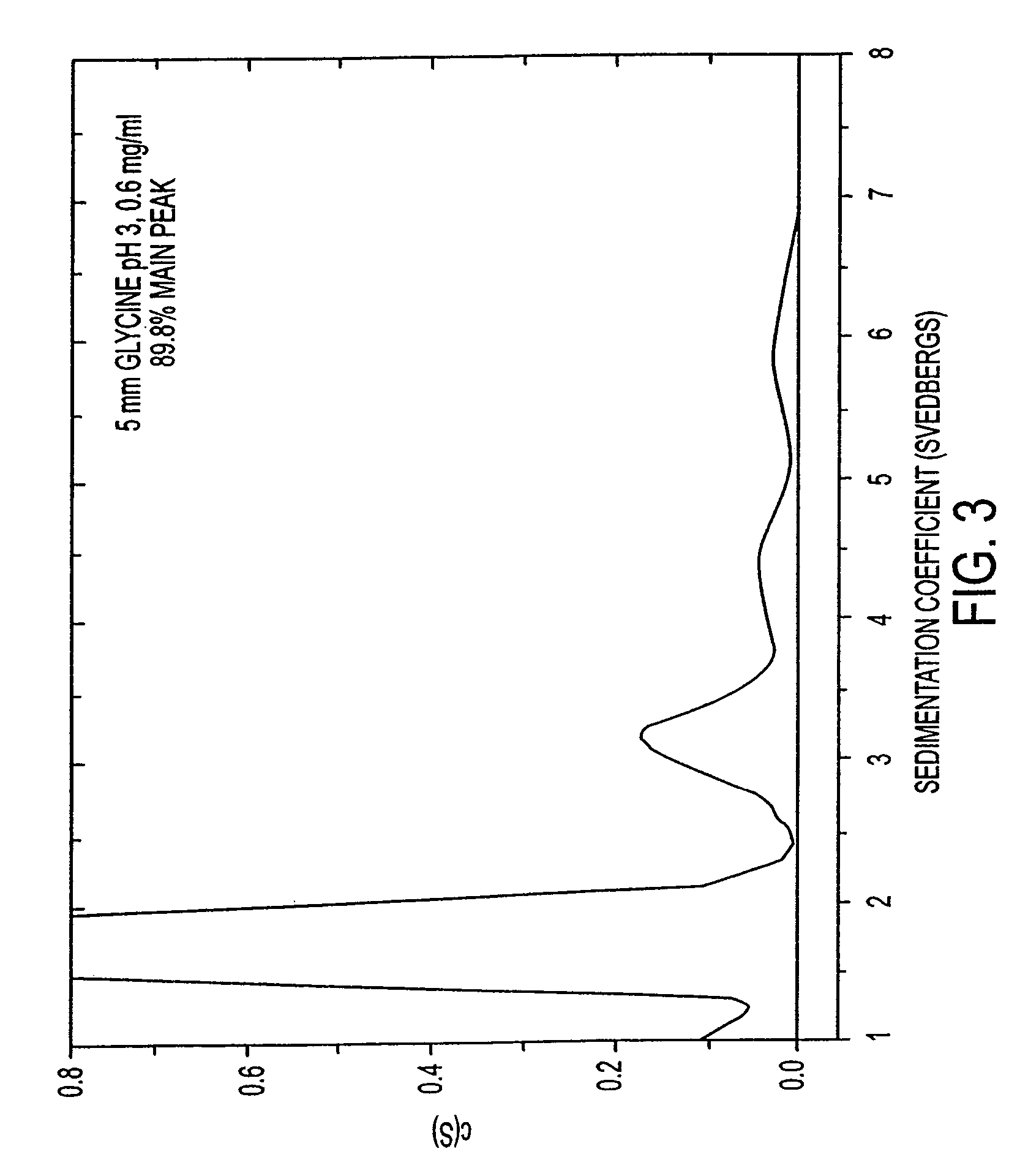HSA-free formulations of interferon-beta
a technology of interferon and beta, which is applied in the direction of drug compositions, peptide/protein ingredients, immunological disorders, etc., can solve the problems of loss or reduction of the pharmaceutical activity of the protein of interest, instability in the pharmaceutical formulation, loss of pharmaceutical utility, etc., and achieve the effect of increasing the amount of monomeric ifn- and increasing the solubility of ifn-
- Summary
- Abstract
- Description
- Claims
- Application Information
AI Technical Summary
Benefits of technology
Problems solved by technology
Method used
Image
Examples
example 1
Determining the Solubility of IFN-β-1b
[0081]Initial experiments were conducted to understand the solubility of IFN-β-1b under a wide variety of conditions of pH, buffer type, and ionic strength. A solution of IFN-β-1b (˜0.8 mg / ml IFN-β-1b in 100 mM glycine, pH 3.0) was dialyzed against the buffers in Table 1. Results are shown in FIG. 1. These results show that the solubility of IFN-β-1b is dependent upon pH and ionic strength. The IFN-β-1b at pH 3.0 remains soluble at all concentrations of sodium chloride to 200 mM. For formulations at pH 4.0, the IFN-β-1b becomes less soluble as the sodium chloride concentration reaches 150 mM. For formulations at pH 5.0, IFN-β-1b becomes less soluble when the formulation contains only 100 mM sodium chloride. Taken together, these data indicate that IFN-β-1b is most soluble in formulations at pH 3.0, less soluble in formulations at pH 4.0, and least soluble at pH 5.0. These data also indicate that increasing the ionic strength of formulations (by ...
example 2
Analytical Ultracentrifugation Experiments
[0084]While solubility experiments can determine how much IFN-β-1b is in solution, other techniques are required to determine the aggregation state of the protein. It is important to determine whether a protein is monomeric in a given formulation and to determine how much of the protein (if any) exists in higher ordered forms such as dimers, trimers, etc. Analytical ultracentrifugation is one of the most powerful techniques for elucidating the aggregation state of proteins (see Liu and Shire (1999) J. Pharm. Sci. 88:1237-1241). Three experiments were conducted to characterize the monomeric content of several IFN-β-1b formulations with the use of analytical ultracentrifugation. These analytical ultracentrifugation experiments were each conducted with a different preparation of IFN-β-1b. In this matter, each experiment contained a common formulation (5 mM glycine, pH 3.0). However, each of these common formulations varied slightly in the perce...
example 3
Stability of Lyophilized IFN-β-1b HSA Free Formulations Under Accelerated Temperature Conditions
[0088]HSA-free formulations of IFN-β-1b at pH 3.0 (5 mM glycine as buffer) and pH 4.0 (5 mM aspartic acid as buffer) containing either 9% trehalose (pH 3.0 and pH 4.0) or 9% sucrose (pH 4.0) were lyophilized. The lyophilized formulations were then stored at 40° C. and their stability measured over 8 weeks. Sucrose and trehalose are typical stabilizing agents used in lyophilized formulations. A level of 9% of these reagents is used so that the reconstituted formulation will be isotonic with body fluids. To minimize the ionic strength of the formulations and thus the amount of aggregated IFN-β-1b, the amount of buffer was kept to a minimum level. Thus, all buffers were at a concentration of 5 mM.
[0089]The typical storage condition for protein pharmaceutical products is often 5° C. However, accelerated temperature conditions are often used in formulation studies to increase the rate of degra...
PUM
| Property | Measurement | Unit |
|---|---|---|
| ionic strength | aaaaa | aaaaa |
| ionic strength | aaaaa | aaaaa |
| concentration | aaaaa | aaaaa |
Abstract
Description
Claims
Application Information
 Login to View More
Login to View More - R&D
- Intellectual Property
- Life Sciences
- Materials
- Tech Scout
- Unparalleled Data Quality
- Higher Quality Content
- 60% Fewer Hallucinations
Browse by: Latest US Patents, China's latest patents, Technical Efficacy Thesaurus, Application Domain, Technology Topic, Popular Technical Reports.
© 2025 PatSnap. All rights reserved.Legal|Privacy policy|Modern Slavery Act Transparency Statement|Sitemap|About US| Contact US: help@patsnap.com



